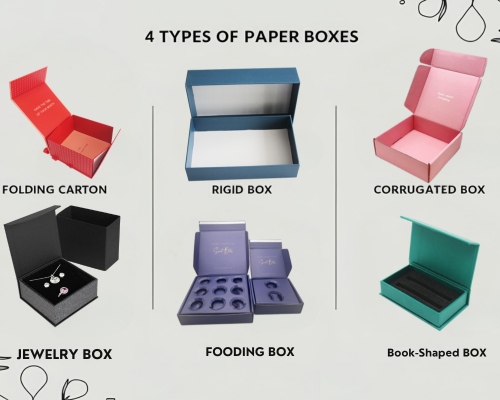Contact Us

Contact Us


Guangzhou Huaisheng Packaging Co.,Ltd.
We provide customers with quality products and provide high-quality services.
If you would like to leave us a comment please go to contact us
+86-18122240089

Creating a custom paper box that reflects your brand and protects your product is more important than ever. Packaging isn't just a container—it’s your silent salesman. Whether you're selling cosmetics, electronics, or baked goods, a thoughtfully designed paper box can elevate your product and improve the overall customer experience.
In this guide, we’ll walk you through the essential steps to design a custom paper box that’s functional, beautiful, and effective for your business.
Before you even open a design tool, start by analyzing your product’s needs and your market's expectations. Ask yourself:
What is the size, weight, and shape of the product?
Is it fragile or does it need protection during shipping?
What kind of unboxing experience do your customers expect?
If you’re selling luxury goods, you’ll want premium finishes. If you’re in the eco-friendly market, sustainable paper options and minimalist design might be the way to go.
There are several popular box types in the packaging world, such as:
Folding carton boxes – Great for lightweight items like cosmetics or snacks.
Rigid boxes – Sturdy and perfect for luxury products or electronics.
Corrugated paper boxes – Ideal for shipping and protective packaging.
Display boxes – Useful for in-store merchandising.
Your choice should align with how your product will be handled, shipped, and displayed.
The most commonly used material is cardboard, which is cost-effective and customizable. You can also explore:
Kraft paper: A natural, eco-friendly option.
Coated paper: Ideal for high-resolution printing.
Recycled paperboard: Sustainable and sturdy.
Make sure the material complements your product. For food items, using food-grade paperboard is a must.
A custom paper box should speak your brand’s language. Start with the basics:
Logo: It should be clearly visible and well-placed.
Colors: Use brand colors that align with your product’s theme.
Typography: Choose legible and attractive fonts.
Imagery: Consider custom illustrations or photos for added personality.
Don’t overdo the design. Clean, balanced layouts often work best. Consider incorporating your brand story or a QR code to drive digital engagement.

A pretty box is useless if it’s hard to open or doesn’t protect your product. Think through:
How will customers open the box?
Is it easy to stack or ship?
Will the product remain secure inside?
Add protective inserts if needed, or explore die-cut windows to make the product visible without opening the box.
Special finishes can make your packaging stand out:
Foil stamping
Embossing or debossing
Spot UV coating
Matte or gloss lamination
These details give your box a premium feel and help draw attention on crowded shelves.
There are three main printing methods to consider:
Offset printing: Best for high-quality, large-volume orders.
Digital printing: Great for small batches and prototyping.
Flexography: Efficient for printing on corrugated paper boxes.
Discuss with your packaging supplier which option best suits your design and quantity.
Before placing a large order, request a prototype. This allows you to:
Check colors and alignment.
Ensure the material and structure are strong enough.
Test how the box works with your product.
If necessary, make changes to the dieline or graphics before final production.
Your box design may need to comply with regulations depending on your product type. Make space for:
Ingredient lists or safety warnings (for food or cosmetics)
Barcodes or QR codes
Country of origin
Sustainability symbols (e.g., recyclable, FSC certified)
This gives your box a professional look and builds trust with consumers.
You don’t have to do it all alone. A reliable custom packaging manufacturer can help guide you through material selection, structural design, and printing. Make sure they offer sampling, have low MOQs if you're starting small, and can scale with you as your business grows.
Designing a custom paper box is more than an aesthetic exercise—it’s a smart business decision. With the right design strategy, your packaging can tell your brand story, increase perceived value, and influence buying behavior. So take your time, test your ideas, and deliver packaging that wows.
